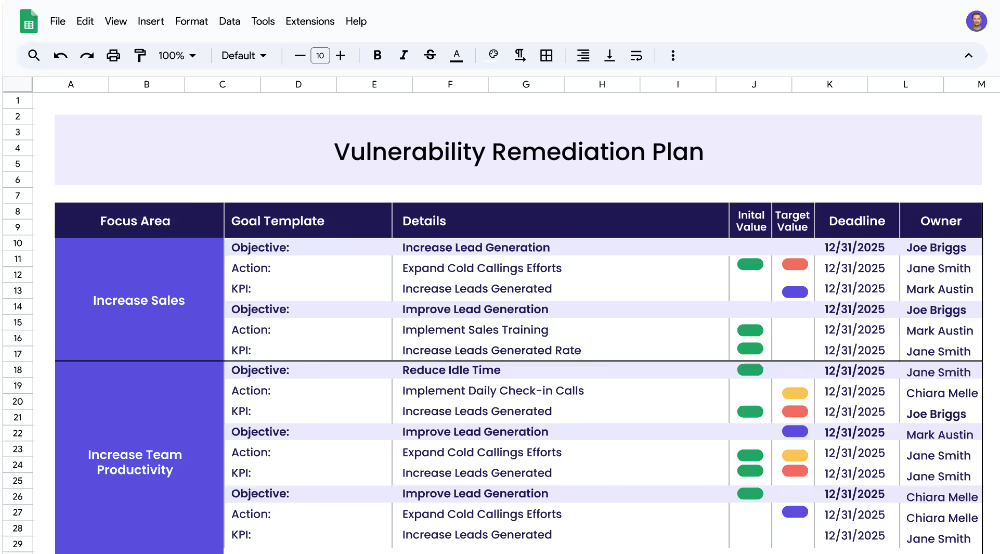A vulnerability remediation plan is a set of measures that are put in place to mitigate and reduce the risk of security vulnerabilities in an organization’s system or network. It aims to identify, assess, and patch all existing system vulnerabilities, then establish and maintain a process for ongoing vulnerability assessment and remediation. This type of plan is an essential component of a robust security strategy and is critical for reducing the risk of potential security threats.
Each focus area has its own objectives, projects, and KPIs to ensure that the strategy is comprehensive and effective.
This Vulnerability Remediation Plan template is designed for IT security professionals, engineers, and teams in any industry who need to plan and remediate vulnerabilities. It provides a comprehensive framework to create a detailed plan that outlines the steps and resources required to identify and address system vulnerabilities. With this template, you can easily define the objectives, set measurable targets, create related projects, and track progress.
Focus areas refer to the areas of your system that need to be addressed in order to reduce the risk of security vulnerabilities. These focus areas should be chosen based on the specific needs of your organization, but common focus areas include vulnerability remediation, network security, and data protection. When defining focus areas, be sure to provide clear examples of what each area entails.
Objectives are the specific tasks that need to be accomplished in order to reduce the risk of security vulnerabilities under each focus area. For example, under the focus area of vulnerability remediation, objectives could include increasing security and improving security awareness. When defining objectives, be sure to be as specific as possible.
KPIs, or key performance indicators, are measurable targets that are set in order to track progress towards achieving an objective. For example, under the objective of increasing security, a KPI could be to reduce the number of unpatched vulnerabilities. When setting KPIs, be sure to include an initial value, a target value, and a unit of measurement (if applicable).
Projects, or actions, are the initiatives that need to be completed in order to achieve the KPIs. For example, under the KPI of reducing the number of unpatched vulnerabilities, a project could be to identify and patch vulnerabilities. When creating projects, be sure to provide clear instructions on what needs to be done and who is responsible for completing the project.
If you’re ready to accelerate your strategy and see faster results, consider using Cascade Strategy Execution Software. Unlike spreadsheets, Cascade provides a streamlined platform designed to help you create, track, and execute your strategy with ease. Sign-up for free or book a demo with one of our strategy experts to get started today!


